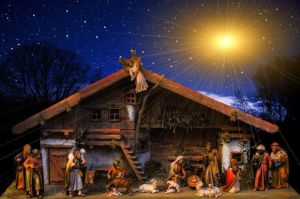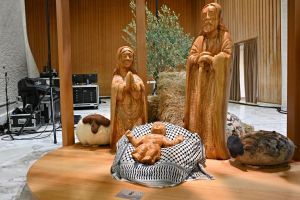Seeing the Bible through the trees

God is a big fan of metaphors. He built them into His world in all kinds of ways, and then He points to them throughout Scripture, all to help us understand who He is, who we are, and what our role is in creation. The metaphor God uses throughout the Bible more than any other might surprise you: trees.
On the very first page of Genesis, God places the father and mother of the human race in a garden filled with trees, all of which — save one — He gives them for food. We all know how the disobedience of Adam and Eve in eating the fruit from that tree cost them Paradise. But trees continue to follow humanity throughout the rest of the Bible too, all the way through the story of God’s redemption. On the last page of Revelation, there again, is a tree. The tree of life grows in a Garden-City, bearing leaves and fruit for the healing of the nations.
This week on the BreakPoint Podcast, I interview my friend Matthew Sleeth, who has authored a new book entitled, Reforesting Faith: What Trees Teach Us About the Nature of God and His Love for Us. Sleeth is a retired medical doctor, and the author of another book, on the Sabbath — which literally changed the way my family does Sundays.
The natural world might be Sleeth’s greatest fascination, especially trees. As he told me, he’s been planting trees his whole life, and he’s made conserving them a big part of his work. Along the way, he came to realize that most Christians don’t realize how central trees are to God’s story.
Sleeth told me how he once offered to plant trees around his church because, as he told his pastor, doing so is scriptural. In response, he was chided for his “tree-hugger theology.” Now, this kind of suspicion of environmentalism is common among Christians, and it’s understandable. Radical environmentalists have, in the words of the Apostle Paul, exchanged worship of the Creator for the worship of creation. Many of them actually revere nature as a god or goddess — often a mother-deity named Gaia — and thank her for life and provision instead of God.
This is a grave, mortal error. It is un-distilled idolatry. There is a huge difference between worshiping nature and worshiping in nature, or worshiping because of nature, responding to the majesty of the world around us by worshiping the One who fashioned it.
But the answer to the idolatry of nature isn’t to ignore God’s creation in all its verdant glory; it’s to rediscover it, both in our backyards and in our Bibles. That’s exactly what Sleeth did years ago when he was challenged on this “tree-hugger theology.” He searched the Scriptures from Genesis to Revelation to see what God really says about trees. And what he found was a forest.
Every major biblical character is associated with a tree in one form or another. Noah and his family knew it was safe to leave the ark because the dove brought back an olive seedling. God met Moses through a burning bush and sent him with a limb in his hand to free the people of Israel.
God’s Tabernacle and later, Temple, were packed with garden-and-forest imagery, the latter built with the mighty cedars of Lebanon. Even the menorah — that famed seven-branched candelabra in the Holy Place — was a symbol of the tree of life.
The psalmist compares the man of God to a tree beside a stream. Proverbs likens wisdom to a tree. When Israel’s prophets describe the restored creation and God’s renewed covenant with His people, they speak of majestic trees — myrtle and cypress — replacing the weeds of the curse. And when Isaiah foretells the Messiah, he describes Him as a shoot from the stump of Jesse.
If anything, the New Testament is even more densely-forested. John the Baptist warns that unfaithful Israel will be chopped down. Jesus calls Himself the true vine, and we are the branches. And of course, He bore our sins in His body on a tree — the cross.
Matthew Sleeth’s book is available in our online bookstore at BreakPoint.org. And I hope you’ll listen to my BreakPoint Podcast interview with him.
Christians don’t have to become tree-huggers to get excited about the beauty that God has put in the world around us. But we should be moved to worship the God who invented metaphors—and even gave some of them leaves.
Resources
Reforesting Faith: What Trees Teach Us About the Nature of God and His Love for Us, Matthew Sleeth | WaterBrook Publishing | 2019
What Trees Tell Us About the Nature of God, with Matthew Sleeth, John Stonestreet, Matthew Sleeth | BreakPoint.org | May 20, 2019
Originally posted at Breakpoint.




























